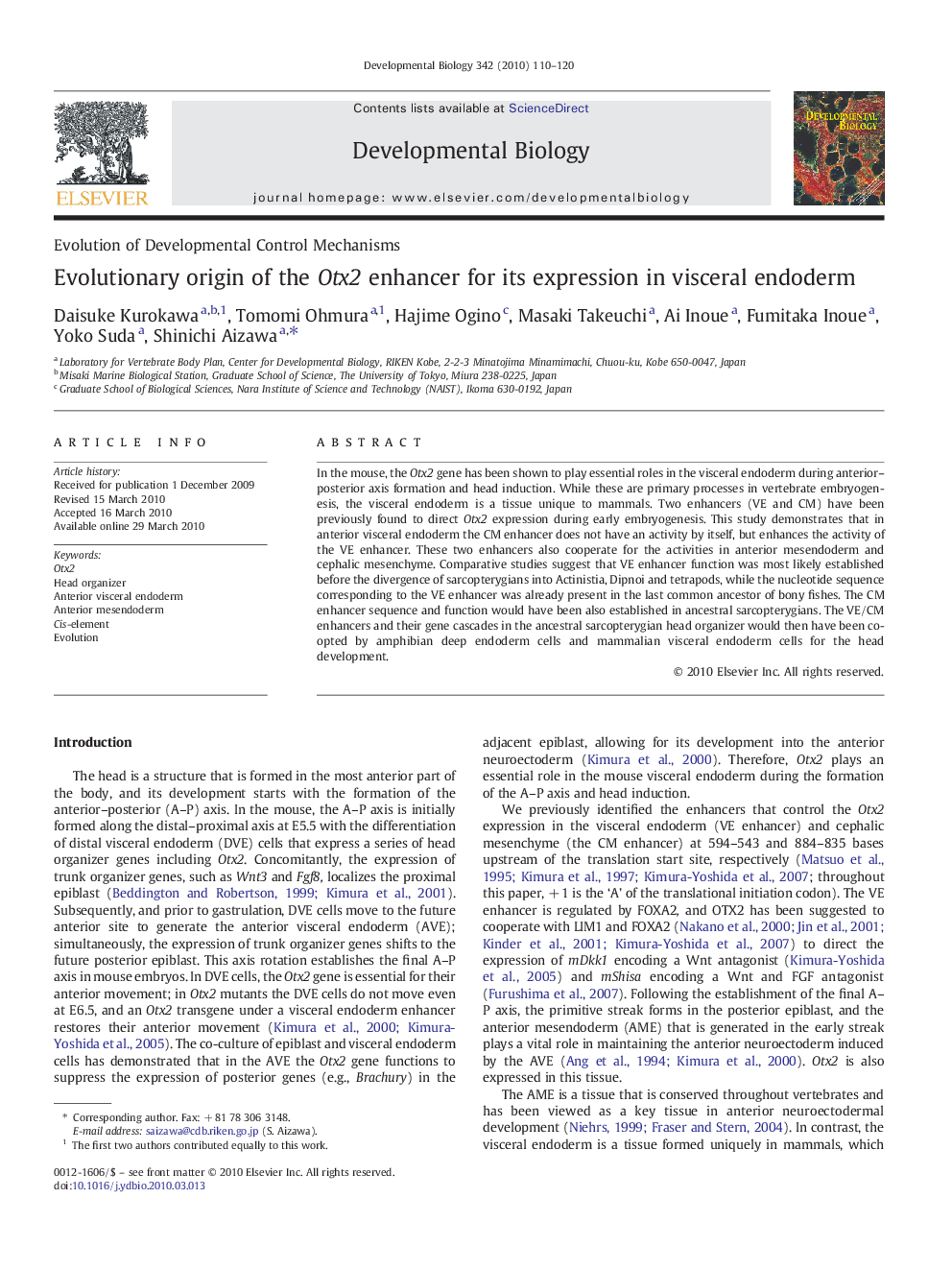| Article ID | Journal | Published Year | Pages | File Type |
|---|---|---|---|---|
| 2173906 | Developmental Biology | 2010 | 11 Pages |
In the mouse, the Otx2 gene has been shown to play essential roles in the visceral endoderm during anterior–posterior axis formation and head induction. While these are primary processes in vertebrate embryogenesis, the visceral endoderm is a tissue unique to mammals. Two enhancers (VE and CM) have been previously found to direct Otx2 expression during early embryogenesis. This study demonstrates that in anterior visceral endoderm the CM enhancer does not have an activity by itself, but enhances the activity of the VE enhancer. These two enhancers also cooperate for the activities in anterior mesendoderm and cephalic mesenchyme. Comparative studies suggest that VE enhancer function was most likely established before the divergence of sarcopterygians into Actinistia, Dipnoi and tetrapods, while the nucleotide sequence corresponding to the VE enhancer was already present in the last common ancestor of bony fishes. The CM enhancer sequence and function would have been also established in ancestral sarcopterygians. The VE/CM enhancers and their gene cascades in the ancestral sarcopterygian head organizer would then have been co-opted by amphibian deep endoderm cells and mammalian visceral endoderm cells for the head development.
